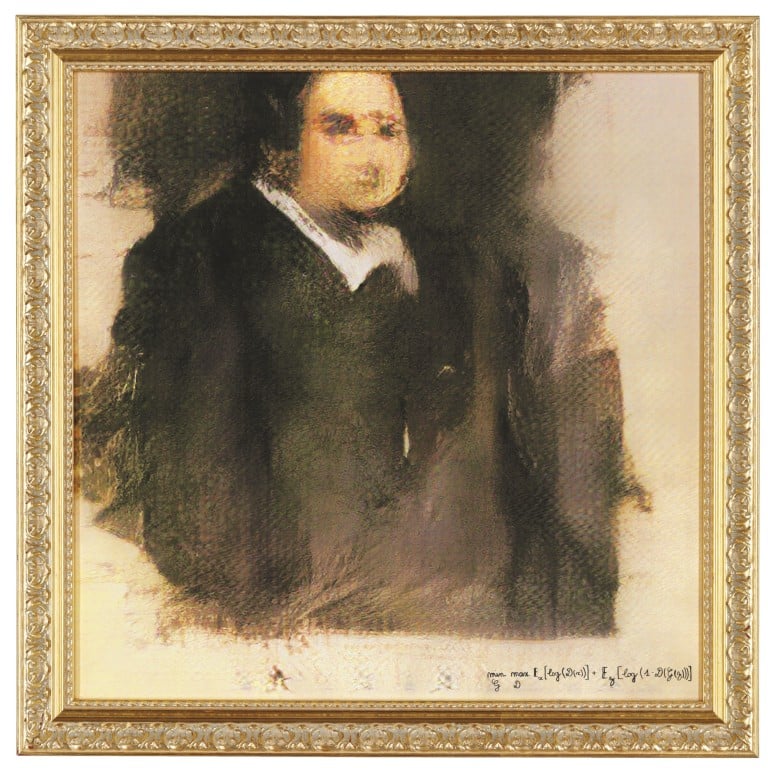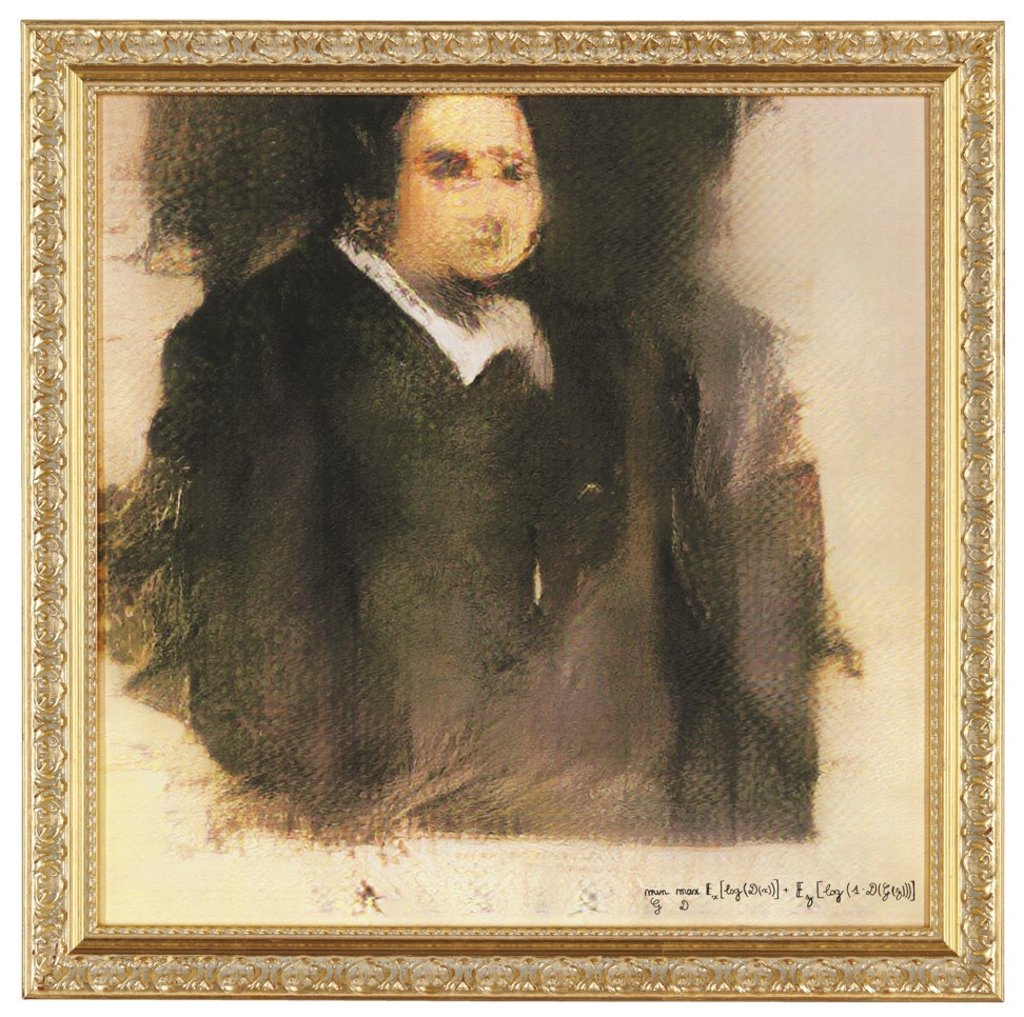Would you pay US$432,500 for this blurry painting created by an AI algorithm?

The portrait, ‘Edmond de Belamy’ – produced by three students – captured public imagination at auction last year, but some artists argue ‘it’s not art’
Edmond de Belamy, a blurry portrait of an aristocratic gentleman in a dark frock coat and white collar made the news when it was sold at Christie’s New York for US$432,500 ((HK$3.39 million) last October.
It was not the price that attracted attention – the sum is a mere sniff in the direction of the record-breaking US$91 million spent on Jeff Koon’s stainless steel rabbit inspired by a child’s inflatable toy – the highest price ever paid for work by a living artist.
What caused the commotion was that instead of an artist’s signature, there was an algorithm – the work was generated by artificial intelligence (AI).
Images generated using AI technology in Google’s pattern-finding software DeepDream have been circulating since 2015, but they have generally been appreciated for their science rather than art.
The guys behind this stunt are not even artists, but [members of] a very talented start-up, who knew how – with an initially false narrative, the right keywords and some good contacts – to cash in on the hype
The Christie’s sale, however, was the first time one of the big players in the global art market shone a spotlight on the brave new world that challenges the boundaries of machine learning and creativity: AI art.
Like many other AI works, Edmond de Belamy was created using GAN – a generative adversarial network. Obvious, an arts collective comprising a trio of 25-year-old French students, fed AI with an algorithm and a data set of 15,000 portraits painted between the 14th and 20th centuries.
The algorithm is made up of two parts: the generator, which makes a new image based on the set; and the discriminator, which, Turing test-style, aims to tell the difference between a human-made image and one created by the generator.
The generator learns from its mistakes; when the discriminator is fooled into thinking that a new image is a real-life portrait, the result is something along the lines of Edmond de Belamy.
People are interested in AI art because it looks like what we know as art, but this is not art, this is just reproduction, just imitation. If a human was to make this art now, we would say it was bad art, so why is it interesting if a machine makes it?
